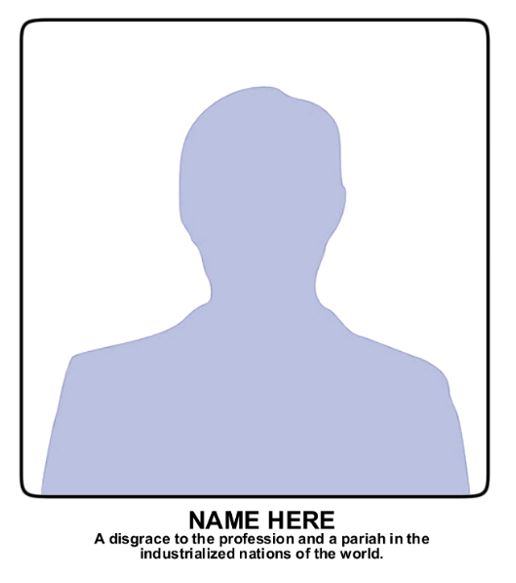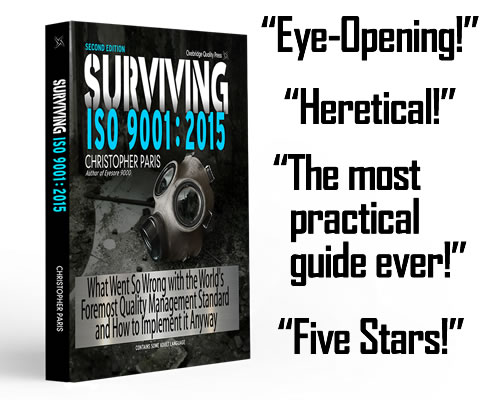By now, users of the new ISO 9001:2015 standard have encountered the curious language embedded in a note under clause 7 for “Environment for the Operation of Processes.” Formerly just called “work environment,” it’s always been understood that this clause sets out to require users to control the work areas where sensitive products might otherwise be harmed if the area was not controlled; this typically applied to clean rooms, for example, where maintaining the work environment was critical to the quality of the product. In effect, the standard still means this, as the ISO 9001:2015 version reads:
The organization shall determine, provide and maintain the environment necessary for the operation of its processes and to achieve conformity of products and services.
There are two components in play here: that the work environment be controlled for (1) the purposes of ensuring the process can function properly, and (2) to protect the quality of products. Where the new standard goes astray, however, is by injecting a series of notes below the requirement that vastly expand the reach of this requirement into areas not within the scope of ISO 9001, and thus creating conflicts within the standard itself. The notes read as follows:
NOTE A suitable environment can be a combination of human and physical factors, such as: (1) social (e.g. non-discriminatory, calm, non-confrontational); [and] psychological (e.g. stress-reducing, burnout prevention, emotionally protective) …
The injection of “social and psychological” aspects of the workplace are borrowed from other management disciplines, such as occupational health and safety, social responsibility & accountability, and labor relations. So it doesn’t make much sense as to why they are inserted here, in a standard aimed only at ensuring product quality.
Dope-smoking lunatics will often make the argument that “happy workers make better products,” ignoring the fact that they type such words on market-leading laptops and cell phones manufactured by three-year-olds in Chinese sweatshops. But it’s moot: the language doesn’t belong in the standard because it contradicts the scope of ISO 9001 set forth in clauses 0 and 1 right at the front of the thing.
As I’ve argued elsewhere, it’s also likely to get someone sued; ISO registrars are not trained, qualified nor even contractually allowed to scour clients for evidence of violating discrimination laws, and if they do, either they or their clients are going to get shoved into court. Worse, an employee suing a company for discrimination can now drag in the ISO registrar and entire Quality Department since they are, effectively, operating under a standard that prohibits discrimination.
It’s also been explained away as being a “note,” and technically notes can’t be audited. This is not always true, and in this case it’s particularly problematic because the note is an attempt to define a term used in the requirement, thus making it a de facto part of the requirement. you have to go out of your way to ignore it or, as I direct my clients, specifically write language in your QMS documentation that refutes it, in order to innoculate yourself during audits.
Worse, the language was injected at the FDIS (Final Draft International Standard) stage of ISO 9001’s development, when ISO is prohibited, by its own rules, for adding requirements. You see, during the early draft stages of Working Draft (WD), Committee Draft (CD) and Draft International Standard (DIS), the TC 176 authors are permitted to add whatever new language they like, because that draft is later voted on and the language can be removed if it’s shot down. When the FDIS is produced, however, it is submitted for final voting and thus the language can’t rejected, since the next step is printing the thing and selling it; thus the only changes permitted between DIS and FDIS are for grammar and formatting. A comparison of the clause 7.1.4 language shows, however, that someone injected significant language in at the FDIS stage, when it was too late for anyone to “vote it out.” Specifically, the note in the DIS version read as follows:
NOTE Environment for the operation of processes can include physical, social, psychological, environmental and other factors (such as temperature, humidity, ergonomics and cleanliness).
It was bad enough, in that it invoked “social and psychological” factors, but you will notice that the expanded discussion about stress, emotional protection, and discrimination don’t appear. Again, those words were injected during a stage when it was impossible to have it removed, after the world had already approved the DIS language above. The “emotionally protective workplace” junk was never authorized or approved by the nations of the world, and yet it appears in the final standard nevertheless.
Further irony: ISO TC 176 is, itself, certified to ISO 9001, and yet it doesn’t even follow its own rules, and it actively ignores the concerns of its customers.
Which is why I have placed a “pariah bounty” on the individual within TC 176 that wrote this. In my book Surviving ISO 9001 — which you can buy here — I announce this bounty as follows:
I remain so absolutely enraged that this text continues to appear in the standard that I am willing to offer a bounty on the TC 176 moron who wrote it. And I’m recruiting you, dear reader, in my quest for intellectual vengeance. If you discover which of the TC 176 members added this language to the standard, send me his or her name. I will then publish a second edition of this book with their name and photo in the space below, to forever be shamed as a disgrace to the profession and a pariah in the industrialized nations of the world.

I remain enraged by this, as more and more companies report back to me their frustration with this clasue, and the problems it’s creating during audits. So I want to expand my bounty beyond just readers of my book (did I mention you can buy it here?) — I’m opening it up to the entire world.
So, dear readers, someone out there knows who wrote this. Was it Charles Corrie? Was it Sweden’s Stefan Tangen? Was it Alex Ezrakhovich? Jack West? The guy who served donuts during committee meetings? Someone knows. Someone knows which exact TC 176 representative who injected this language at the last minute, intentionally circumventing official ISO rules on standards development, in order to put their personal imprint on the standard for the next 20 years or more. And I want to know who it is.
If you know, email me. Send me what you know. Send it anonymously, I don’t care. When I’m able to confirm it, I will not only issue a second edition of Surviving ISO 9001 with their photo in it, I will publish it here as well. And I’ll send you a free copy of the book.
Shaming ISO into fixing this mess is, alas, our only remaining avenue, short of having a bold nation file an official grievance against ISO through the World Trade Organization. And this clause, more than anything else in the new standard, is deserving of shame.
Christopher Paris is the founder and VP Operations of Oxebridge. He has over 35 years’ experience implementing ISO 9001 and AS9100 systems, and helps establish certification and accreditation bodies with the ISO 17000 series. He is a vocal advocate for the development and use of standards from the point of view of actual users. He is the writer and artist of THE AUDITOR comic strip, and is currently writing the DR. CUBA pulp novel series. Visit www.drcuba.world








